Growing up near the waterways of Pennsylvania has provided me with a rich experience of observing diverse waterfowl species. As an avid birdwatcher, I find each encounter with an elegant heron or a charming duck to be both educational and enchanting. These interactions offer unique perspectives on the delicate ecosystems these birds inhabit. Observing their habits and habitats has deepened my appreciation for the interconnectedness of nature in the Keystone State.
From the tranquil lakes to the winding rivers, Pennsylvania’s water birds have always held a special place in my heart. They remind me of the beauty and wonder of our natural world.
Key Takeaways
- Mallards, American Wigeons, Northern Pintails, and Northern Shovelers are among the most common water birds in Pennsylvania.
- These birds inhabit various habitats like lakes, rivers, wetlands, ponds, and reservoirs in the state.
- Migration patterns vary, with some species staying year-round while others migrate south during winter.
- Conservation efforts are crucial due to threats like habitat loss and pollution impacting water bird populations in Pennsylvania.
Ducks, Geese, & Swans

Ducks, geese, and swans are prominent waterfowl species commonly observed in the diverse wetland habitats of Pennsylvania.
Mallards, with their vibrant green heads and signature quacking, are the most prevalent duck populations in the state.
American Wigeons, recognized by their soft whistles and blue-gray heads, gracefully forage on grasses and aquatic plants in Pennsylvania’s wetlands.
Northern Pintails impress with their elongated and pointed tail feathers, often seen in shallow wetlands and marshes.
Northern Shovelers stand out for their distinctive shovel-like bills, expertly sifting through vegetation-rich waters for food.
Blue-winged Teals, small and agile, display stunning blue wing patches as they migrate through the state’s marshes and ponds, adding to the rich tapestry of water bird species in Pennsylvania.
Herons, Ibises, and Cranes

Among the diverse array of water birds inhabiting Pennsylvania’s wetlands, herons, ibises, and cranes stand out for their distinctive characteristics and behaviors. The Black-crowned Night Heron, known for its nocturnal habits, can be spotted throughout the state. Sandhill Cranes, with their elegant stature and melodious calls, engage in elaborate courtship displays. The Least Bittern, Pennsylvania’s smallest heron, expertly camouflages in marshes while hunting in midair. The Little Blue Heron, distinguished by its unique coloration, frequents shallow wetlands displaying patience in its hunting techniques. Lastly, the majestic Great Blue Heron, a skilled hunter, is a common sight in marshes, wetlands, and along water bodies. These water birds add grace and beauty to Pennsylvania’s natural landscapes.
| Species | Description |
|---|---|
| Black-crowned Night Heron | Nocturnal heron found throughout Pennsylvania. |
| Sandhill Crane | Elegant bird known for bugling calls and courtship displays. |
| Least Bittern | Smallest heron adept at blending in wetlands and hunting in midair. |
| Little Blue Heron | Slate-gray with purple-maroon head, patient hunter in shallow wetlands. |
Loons, Grebes, and Others
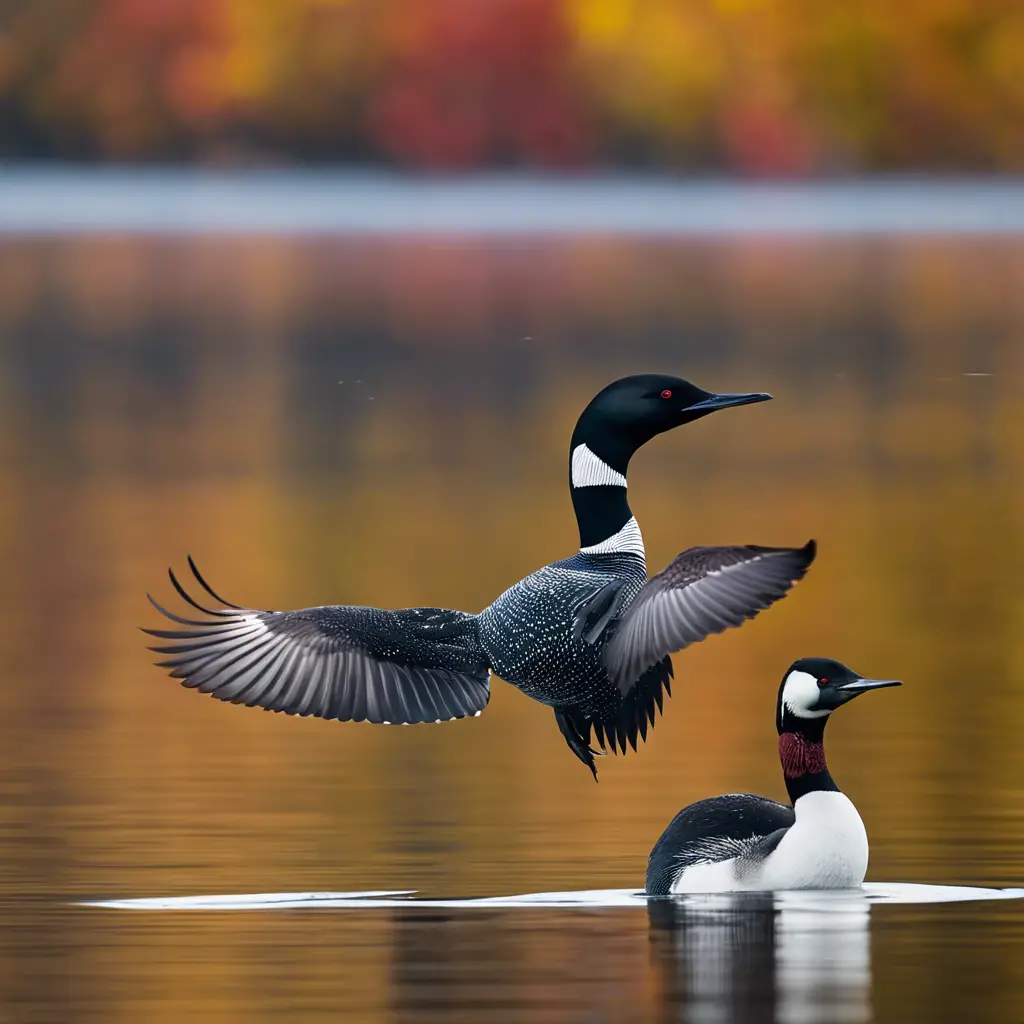
Loons, Grebes, and other diving birds are notable inhabitants of Pennsylvania’s aquatic ecosystems, showcasing unique characteristics and behaviors that contribute to the diversity of water bird species in the state. Common Loons are large diving birds known for their haunting calls, often found in Pennsylvania’s lakes.
Pied-billed Grebes, small with round bodies and short tails, frequent marshes and ponds in Pennsylvania. Horned Grebes, small diving birds, exhibit distinctive courtship behaviors and are commonly sighted in freshwater lakes and marshes in Pennsylvania. Red-necked Grebes, medium-sized diving birds with unique breeding displays, prefer swimming and diving in the state’s freshwater lakes and marshes.
Additionally, Horned Larks and Wilson’s Snipes are common in Pennsylvania’s wetlands and marshy areas, enriching the diversity of water bird species.
Mallard

Mallards, with their striking plumage and adaptable nature, are a prominent and easily recognizable water bird species in Pennsylvania.
- Male Mallards boast a bright green head, thin white collar, dark reddish-brown chest, yellow bill, and a black rump with a white-tipped tail.
- Female Mallards exhibit mottled brown feathers with orange and brown bills.
- These birds sport purple-blue secondary feathers on their wings, adding to their distinctive appearance.
Mallards are commonly found in various habitats such as lakes, ponds, rivers, and even urban parks throughout Pennsylvania. Their prevalence and unique features make them a beloved sight for birdwatchers and nature enthusiasts in the state.
Canada Goose
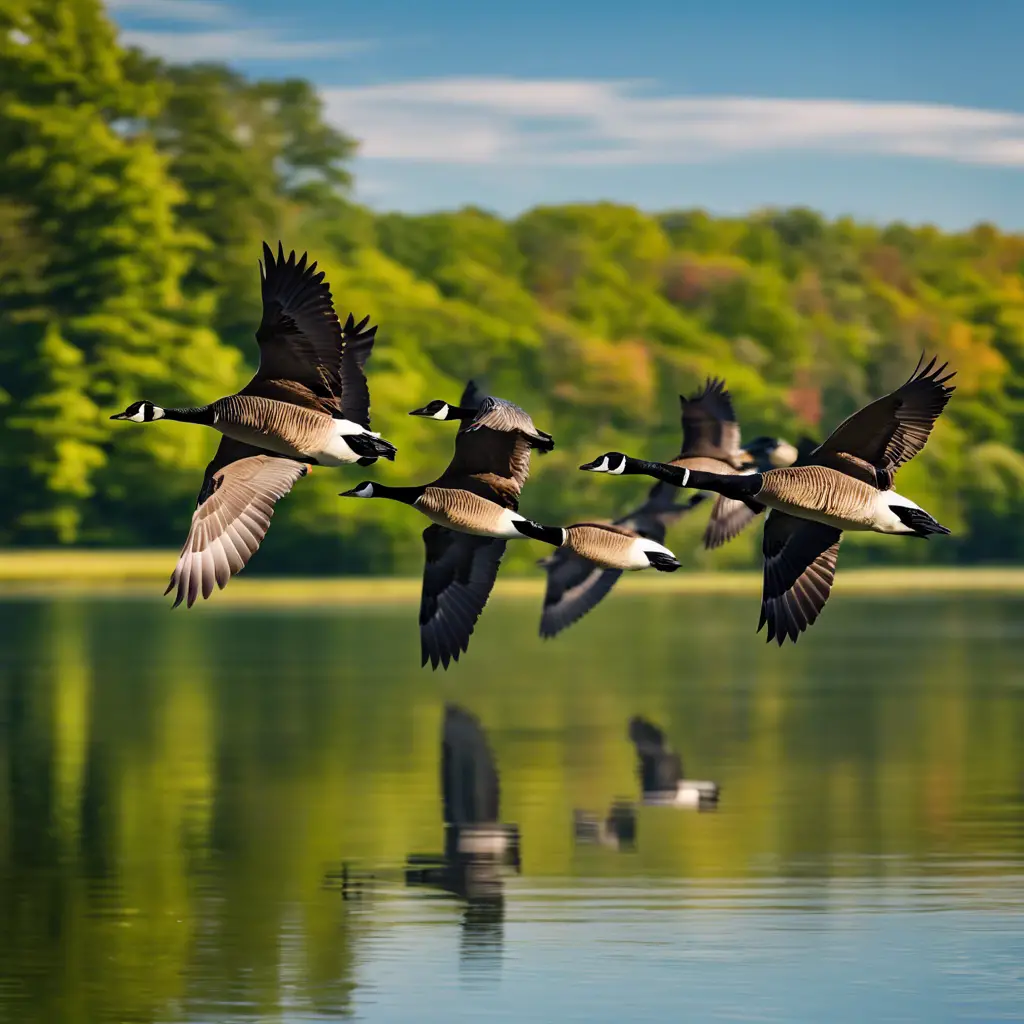
Widely recognized by their long black necks and distinctive white cheek patches, the Canada Goose is a common and easily identifiable water bird species in Pennsylvania. These large water birds display brown bodies with a contrasting white chest, a defining feature in the state.
Often spotted in lakes, rivers, and urban areas, Canada Geese are known for their V-shaped flying formations and distinctive honking calls. With a conservation status of least concern, these geese boast healthy populations in Pennsylvania.
Their presence adds to the diverse avian wildlife in the state, making them a familiar sight to residents and visitors alike. Keep an eye out for these majestic birds during your outdoor adventures in Pennsylvania.
Great Blue Heron
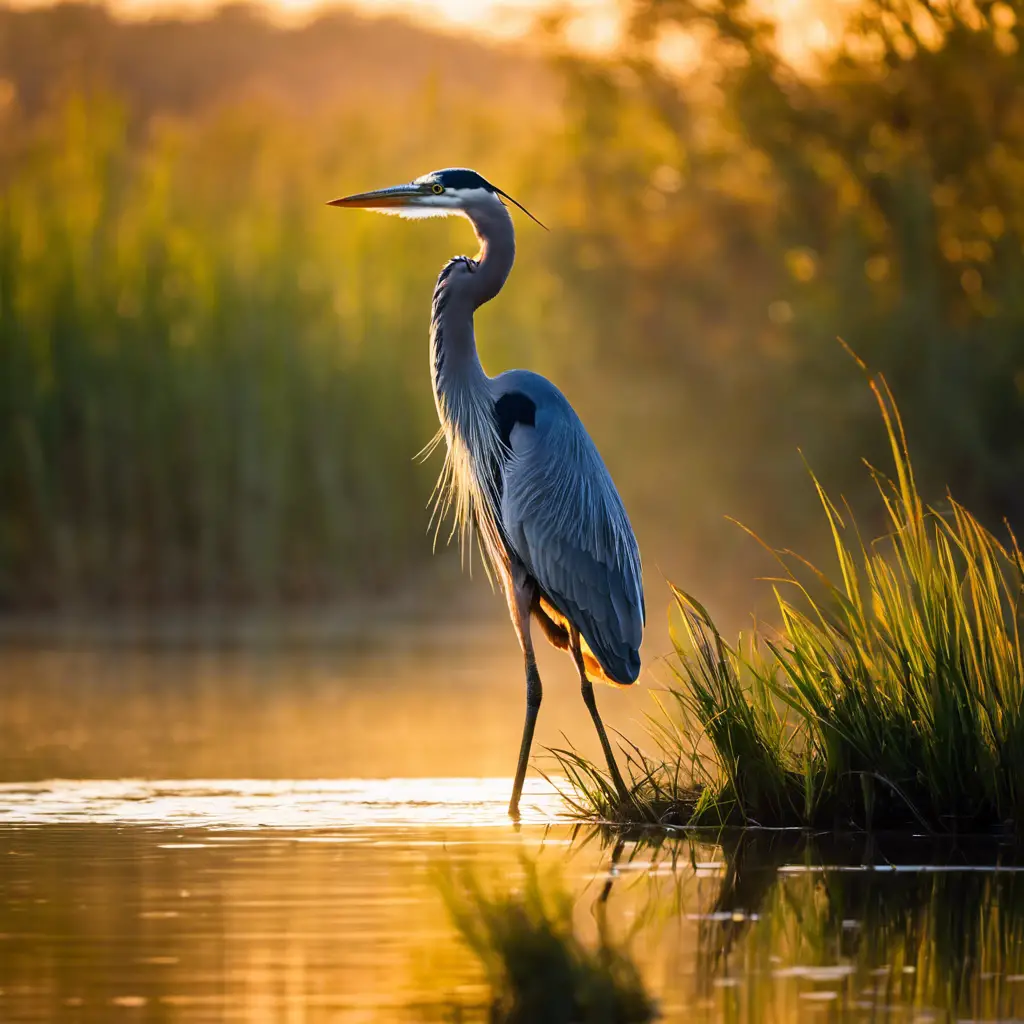
The Great Blue Heron, a majestic water bird native to North, Central, and South America, is a prominent member of the avian community in Pennsylvania. This impressive heron, belonging to the Ardeidae family, stands out with its blue-gray plumage and remarkable hunting skills. Here are some key points about the Great Blue Heron:
- The Great Blue Heron is commonly found in wetlands, marshes, and along lakes and rivers in Pennsylvania.
- With its long legs, this bird can reach lengths of 97 to 137 cm, making it a sizable presence in the water bird species of Pennsylvania.
- Despite its significant role in the ecosystem, the Great Blue Heron holds a conservation status of least concern, ensuring its continued presence in North America.
Common Loon
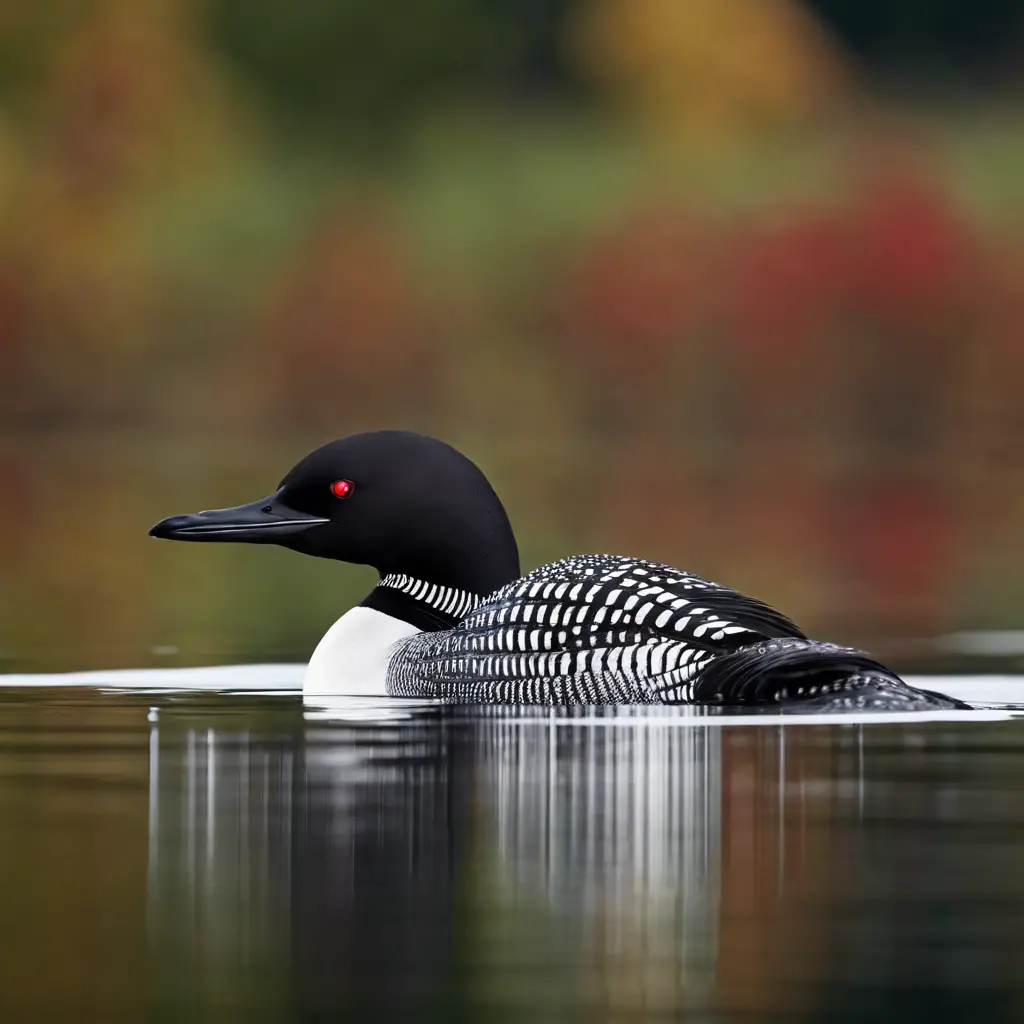
Emerging gracefully from the serene waters of Pennsylvania’s lakes and rivers, the Common Loon captivates with its haunting calls and expert diving prowess. This large diving bird, also known as the Great Northern Diver, showcases striking black-and-white plumage complemented by a vivid red eye. Common Loons are often spotted in large lakes, where they skillfully dive to catch fish, their primary diet. During migration, these birds can be observed in coastal waters, estuaries, and bays, adding to their mystique. Fortunately, the conservation status of the Common Loon is of least concern, indicating stable populations. Witnessing a Common Loon in its natural habitat is a true delight for bird enthusiasts and nature lovers alike.
| Common Loon Facts | Details |
|---|---|
| Scientific Name | Gavia immer |
| Habitat | Large lakes |
| Conservation Status | Least concern |
American Coot
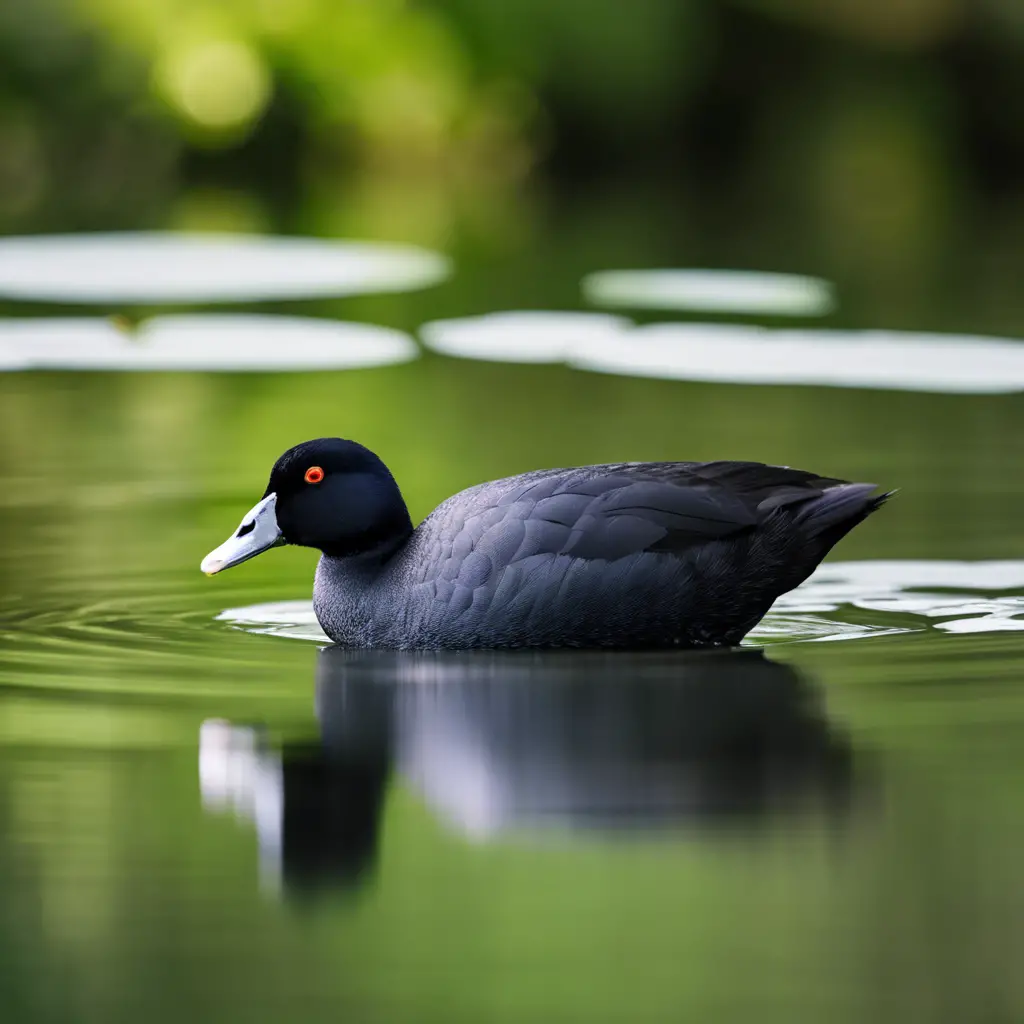
With their stocky build, dark plumage, and distinctive white frontal shields, American Coots are remarkable water birds found in Pennsylvania’s freshwater habitats. These birds have unique lobed toes that aid in swimming and navigating through aquatic vegetation.
American Coots exhibit omnivorous feeding habits, consuming a diet that includes aquatic plants, insects, small fish, and invertebrates. They’re highly social creatures, often forming large flocks during migration and wintering periods in Pennsylvania.
Recognized by their raspy ‘kuk’ call, American Coots are excellent divers, relying on their agile feet to propel themselves underwater for feeding. These characteristics make them fascinating and important members of the waterbird community in Pennsylvania.
Frequently Asked Questions
What Is the White Water Bird in Pennsylvania?
The white water bird in Pennsylvania is the Great Egret. With its large size and striking white plumage, this skilled hunter catches fish and small aquatic creatures. Easily identifiable by its tall stature in waterways.
Which Bird Is Usually Found on the Water?
You’ll often find water birds like Mallards, American Wigeons, Northern Pintails, Northern Shovelers, and Blue-winged Teals gracefully swimming on various water bodies in Pennsylvania. Their distinct features and behaviors make them fascinating to observe in their natural habitats.
Which Birds Stay Around Water?
Water birds, like Mallards and American Wigeons, often stay near water bodies for nesting, feeding, and protection. These birds exhibit diverse behaviors, such as diving and wading, showcasing their adaptation to aquatic environments in Pennsylvania.
Does Pennsylvania Have Loons?
Yes, Pennsylvania does not have native loons. They breed in northern regions and coastal areas. Loons are known for their haunting calls and exceptional diving abilities for fishing. Birdwatchers might spot migrating loons in specific regions during migration.
Conclusion
You have now explored the diverse array of water birds that call Pennsylvania home, from the colorful Mallard to the majestic Great Blue Heron. These birds showcase unique characteristics and behaviors, adding to the richness of the state’s avian biodiversity.
Whether you spot a Canada Goose gliding across a pond or a Common Loon diving for fish, the water birds of Pennsylvania offer endless opportunities for birdwatching enthusiasts to observe and appreciate nature’s beauty.

An avid ornithologist, zoologist and biologist with an unwavering passion for birds and wild animals.
Dr. Wilson’s journey in ornithology began in childhood and led him to obtain a Ph.D. in Ornithology from the prestigious Avian Research Institute. He has worked closely with renowned experts in the field and conducted extensive research and field studies globally.

